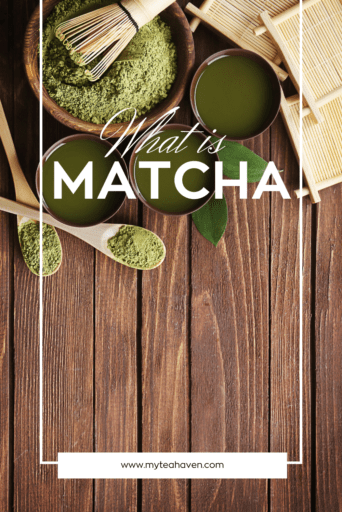Unveiling the Green Mystery: What is Matcha Tea?
Introduction
I’m always excited to learn more about tea, and one of my favorite discoveries has been matcha tea. Today, we’ll delve into this fascinating world, exploring its origins, ingredients, benefits, and more. Join me as we uncover the secrets of this vibrant green beverage.
We are a participant in the Amazon Services LLC Associates Program, an affiliate advertising program designed to provide a means for us to earn fees by linking to Amazon.com and related sites. This post may contain affiliate links which means we may receive a commission, at no cost to you, for purchases made using our links. Please see my disclosure to learn more. Unless otherwise stated, all prices are in US$
What is Matcha Tea?
Matcha is a type of green tea that is made from finely ground powder of specially grown and processed green tea leaves. Unlike regular green tea, where the leaves are infused in hot water and then discarded, with matcha, you consume the whole leaf, making it a more potent source of nutrients and antioxidants.
History
Matcha has a long and rich history that dates back to ancient China, where it was first used in traditional tea ceremonies. It later spread to Japan, where it became an integral part of Japanese culture and is still revered today for its health benefits and ceremonial significance.

How is It Made?
Matcha tea is made from shade-grown leaves that are carefully handpicked, steamed to prevent fermentation, dried, and then ground into a fine powder using a stone mill. This meticulous process is what gives matcha its vibrant green color and unique flavor profile.
Benefits
One of the key benefits of this beverage is its high concentration of antioxidants, which help protect the body against free radicals and reduce the risk of chronic diseases. It’s also rich in vitamins and minerals, including vitamin C, selenium, chromium, zinc, and magnesium, making it a nutritious addition to your diet.
Types
There are several grades, ranging from ceremonial grade, which is the highest quality and is used in traditional tea ceremonies, to culinary grade, which is more affordable and is often used in cooking and baking. The grade of matcha you choose will depend on your personal preference and intended use.
Culinary Grade

Handpick Organic Japanese Matcha
Ceremonial Grade

Kiwami Super Ceremonial Matcha
Culinary Grade

Jade Leaf Culinary Grade Matcha
Quality Factors
When selecting matcha, it’s important to consider factors such as color, aroma, texture, and taste. Ceremonial grade matcha should have a vibrant green color, a rich aroma, a smooth texture, and a slightly sweet and umami taste.
How to Make
Making matcha tea is a simple process that involves whisking the powder with hot water until it is frothy. You can then enjoy the tea as is or add milk and sweeteners to taste. It’s a versatile beverage that can be enjoyed hot or cold, depending on your preference.
Serving
Matcha is traditionally served in a small bowl called a chawan, using a bamboo whisk called a chasen to whisk the tea until it is frothy. It is then enjoyed in a few sips, savoring the rich flavor and aroma of the tea.
Chawan

Kutani Japanese Rabbit Painted Matcha Bowl
Chasen

ZENRC Handcrafted Golden Bamboo Matcha Whisk

Recipes
Matcha can also be used in a variety of recipes, including smoothies, lattes, desserts, and savory dishes. Its vibrant green color and unique flavor make it a versatile ingredient that can add a burst of flavor and nutrition to your favorite dishes.
Storage
To preserve the freshness and flavor of matcha, it’s important to store it in an airtight container in a cool, dark place away from direct sunlight and heat. This will help prevent oxidation and maintain the quality of the tea.
Where to Buy
Matcha can be purchased from specialty shops, health food stores, and online retailers. When buying matcha, it’s important to choose a reputable source that offers high-quality products to ensure you’re getting the best flavor and health benefits.
A Few Final Thoughts
Matcha tea is a unique and versatile beverage that offers a wide range of health benefits and culinary possibilities. Whether you enjoy it as a traditional tea ceremony or incorporate it into your favorite recipes, matcha tea is sure to delight your taste buds and nourish your body.
Some Questions You Might Have
- Is matcha caffeinated?
Yes, matcha contains caffeine, but the caffeine content can vary depending on the grade of the tea.
- Can I drink matcha if I’m pregnant or breastfeeding?
It’s best to consult with your healthcare provider before consuming matcha if you’re pregnant or breastfeeding.
- How does matcha tea differ from regular green tea?
Matcha is made from whole tea leaves that are ground into a fine powder. Regular green tea is made from infused tea leaves that are discarded.
- Can I use matcha in baking?
Yes, matcha can be used in baking to add a unique flavor and vibrant green color to your baked goods.
- Does match have any side effects?
While matcha is generally safe for most people, consuming excessive amounts may lead to caffeine-related side effects. These include insomnia, anxiety, and digestive issues.




